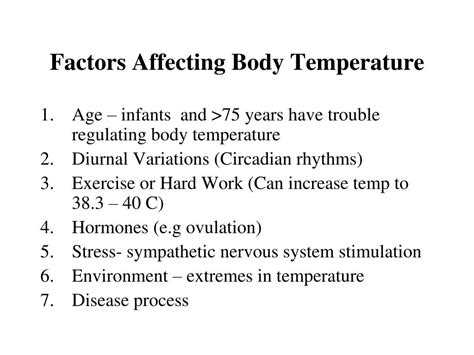Intro
Learn if 99.4 is considered a fever, understanding normal body temperature, low-grade fever symptoms, and when to seek medical help for high fever treatments and thermometer readings.
The age-old question: is 99.4 a fever? The answer to this question is not as straightforward as it seems. To understand whether 99.4 is considered a fever, we need to delve into the world of body temperature and explore what constitutes a fever.
Body temperature is a vital sign that can indicate overall health. Normal body temperature can vary from person to person, but it typically ranges from 97.7 to 99.5 degrees Fahrenheit (36.5 to 37.5 degrees Celsius). However, these numbers can fluctuate throughout the day due to various factors such as activity level, time of day, and environmental conditions.
A fever, also known as pyrexia, is an elevation in body temperature above the normal range. Fevers can be caused by a variety of factors, including infections, inflammation, and immune system responses. The American Academy of Pediatrics defines a fever as a rectal temperature above 100.4 degrees Fahrenheit (38 degrees Celsius) in infants, while for adults and children, a fever is typically defined as an oral temperature above 100 degrees Fahrenheit (37.8 degrees Celsius) or a rectal temperature above 100.4 degrees Fahrenheit (38 degrees Celsius).
Understanding Body Temperature

In the context of these definitions, 99.4 degrees Fahrenheit is generally not considered a fever. However, it is essential to note that body temperature can vary from person to person, and what might be a normal temperature for one individual could be slightly elevated for another. Factors such as age, sex, and the time of day can influence body temperature, making it crucial to consider these variables when assessing whether 99.4 is a fever.
Factors Influencing Body Temperature

For instance, newborns and young infants have a narrower range of normal body temperature compared to adults. A temperature of 99.4 in these age groups might be more concerning and could indicate an underlying infection. On the other hand, adults might experience a slight elevation in body temperature due to non-pathological factors such as vigorous exercise, hot environments, or certain medications, which would not be indicative of a fever.
Non-Pathological Causes of Elevated Body Temperature
Some common non-pathological causes of elevated body temperature include: - Physical activity: Engaging in strenuous exercise can cause body temperature to rise. - Environmental factors: Exposure to high temperatures or humidity can elevate body temperature. - Medications: Certain drugs, such as antibiotics and some antidepressants, can affect body temperature regulation. - Hormonal changes: Hormonal fluctuations during the menstrual cycle or menopause can influence body temperature.When to Seek Medical Attention

While 99.4 degrees Fahrenheit is not typically considered a fever, there are situations where medical attention is necessary, even if the temperature is below the fever threshold. These include:
- Severe symptoms: If accompanied by severe headache, stiff neck, difficulty breathing, or severe abdominal pain, medical attention is required regardless of the temperature.
- Young children: Infants and young children with any sign of illness, including a temperature of 99.4, should be evaluated by a healthcare professional.
- Underlying conditions: Individuals with compromised immune systems or chronic medical conditions may require medical attention for temperatures that would not be concerning in healthy individuals.
- Prolonged duration: If a temperature of 99.4 persists for an extended period, it may indicate an underlying issue that needs medical evaluation.
Monitoring and Managing Body Temperature

Monitoring body temperature is crucial, especially in vulnerable populations such as the elderly, young children, and those with chronic illnesses. Understanding what constitutes a normal body temperature and being aware of the signs and symptoms of fever can help in early detection and management of potential health issues.
Practical Tips for Monitoring Body Temperature
- Use an accurate thermometer: Ensure that the thermometer is calibrated correctly and used as directed. - Consider the method: Oral, rectal, axillary (under the arm), and temporal artery (forehead) temperatures have different normal ranges. - Keep a record: Tracking body temperature over time can help identify patterns and abnormalities.Conclusion and Next Steps

In summary, while 99.4 degrees Fahrenheit is generally not considered a fever, it is essential to consider individual variations, age, and accompanying symptoms when evaluating body temperature. Understanding the factors that influence body temperature and knowing when to seek medical attention can help in the early detection and management of potential health issues.
If you have concerns about your body temperature or that of a loved one, it is always best to consult with a healthcare professional. They can provide personalized advice and care based on the specific situation.
What is considered a normal body temperature range?
+Normal body temperature can vary from person to person but typically ranges from 97.7 to 99.5 degrees Fahrenheit (36.5 to 37.5 degrees Celsius).
Is 99.4 degrees Fahrenheit considered a fever?
+Generally, 99.4 degrees Fahrenheit is not considered a fever. However, this can vary depending on age, individual baseline temperature, and the presence of other symptoms.
When should I seek medical attention for a fever or elevated body temperature?
+Seek medical attention if you or a loved one experiences severe symptoms, if the fever is very high, or if it persists for an extended period. Additionally, certain populations like young children, the elderly, and those with compromised immune systems should seek medical evaluation even for mild elevations in body temperature if accompanied by any concerning symptoms.
We invite you to share your thoughts and experiences with body temperature and fevers in the comments below. Have you ever had a situation where you were unsure if a temperature was a fever? How did you manage it? Your insights can help others navigate similar situations. Remember to share this article with anyone who might find the information helpful, and let's continue the conversation on social media using relevant hashtags. Together, we can create a community that supports and informs each other about important health topics.
